History of blockchain

Blockchain is a relatively young technology that has experienced explosive growth in recent years. These days, almost everyone has heard about blockchain technology and its most widely known application, Bitcoin. Still, even just 10 years ago, few people knew about its existence. In this article, we'll explore thehistoryof blockchain technology and cryptocurrency's emergence and development. We'll take a closer look at the origins of blockchain. We'll also find answers to questions like "Why was blockchain created?" and "When did blockchain become popular?"
Blockchain and smart contracts are still in the early stages of a 20-year, if not a 50-year adoption and maturation cycle. Some have compared it to 1994 and the Web. — Brian Behlendorf, Executive director of Hyperledger.
How did blockchain start?
When did blockchain start? Let's begin with a brief history of blockchain technology.
The history of blockchain started with an idea first suggested by David Chaum in 1982. Still, the first mention of the technology for storing documents on a cryptographically secured chain of blocks dates back to 1991 when Stuart Haber and Scott Stornetta described a solution for storing digital documents with a timestamp so they couldn't be tampered with. In 1992, Merkle trees were incorporated into blockchain's development, allowing multiple documents to be collected into one block. However, this technology wasn't used until the creation of Bitcoin.
When was blockchain invented? In 1998, Wei Dai introduced the concept of a digital currency called b-money. He first proposed using a decentralised ledger and the proof-of-work concept. Almost simultaneously, another cryptographer, Nick Szabo, published a paper that laid out the principles of the digital currency Bit Gold. He proposed a major innovation: a decentralised public ledger. Its use increased confidence in the system and made it possible for each user to receive data on any transaction.
In 2004, computer technology developer Hal Finney introduced the RPoW (Reusable Proof-of-Work) network. The system had its own digital token, Hashcash, with a cryptographic signature that could be sent between users. In the RPoW system, the problem of double-spending was solved by registering token holders on a trusted server. In that way, RPoW can be called an early cryptocurrency prototype.
Now that we know when blockchain was invented, let's move further and review the history of cryptocurrency timeline.
The emergence of cryptocurrencies
The history of cryptocurrency timeline started in 2008 when someone under the pseudonym Satoshi Nakamoto published a document on the Internet called Bitcoin: a peer-to-peer electronic cash system. It is believed that the impetus for the invention of Bitcoin was the 2008 financial crisis when people lost faith in traditional financial institutions and instruments. The technical support and implementation of the technology took 10 months. On 3 January 2009, the first block of the Bitcoin blockchain was mined.
The first Bitcoin transaction (and, therefore, the first transaction in crypto coin history) took place just a few days later, on 12 January 2009, when Satoshi sent 10 Bitcoins to Hal Finney.
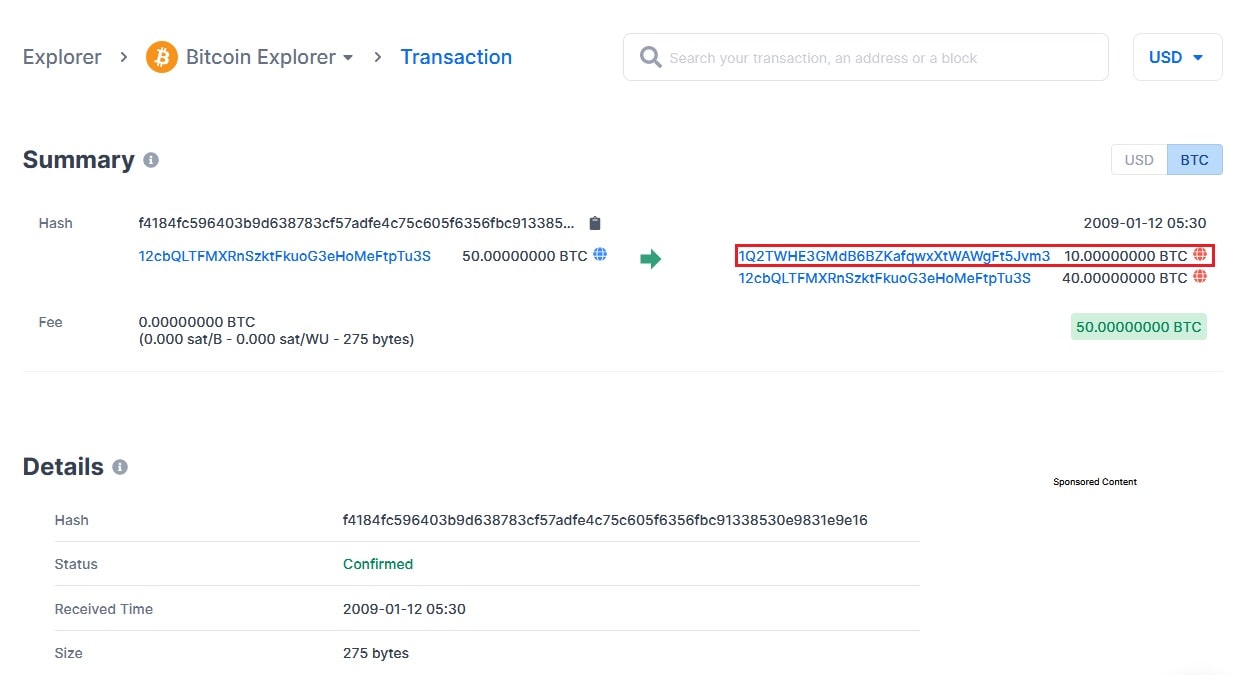
Bitcoin was the only cryptocurrency for just a short time. As its fame grew, other cryptocurrencies began to appear, designed to correct Bitcoin's drawbacks or implement any additional ideas.
In the summer of 2011, the idea of a Proof-of-Stake (PoS) consensus algorithm appeared. In 2012, the crypto industry began to rapidly gain popularity, with the first cryptocurrency exchanges appearing and dedicated cryptocurrency wallet apps to store digital assets on a user's computer being released. In July 2013, the first ICO was held, raising over $5 million for the Mastercoin project.
Smart contracts and the second generation of cryptocurrencies
In 2013, programmer Vitalik Buterin announced the need to develop a scripting language to create decentralised apps (dApps). Leading the development team, he created a new blockchain-based platform called Ethereum. Its main innovation was the emergence of smart contracts, which are hosted and signed on the Ethereum blockchain and can be used to conduct a transaction without involving third parties when certain conditions are met.
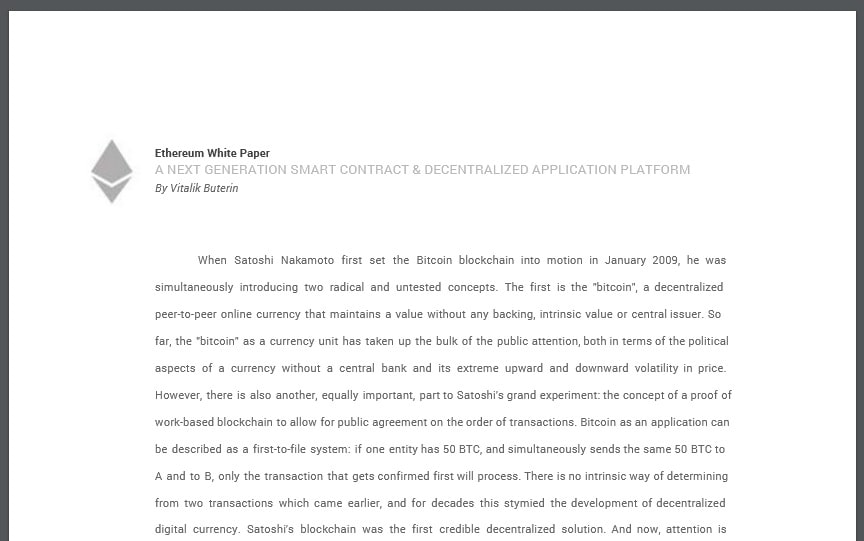
After the Ethereum blockchain was launched in 2015, an ICO was held to implement the project. The ICO's participants received ETH tokens. The ability to develop dApps resulting from Ethereum's emergence and the ICO boom soon saw a surge in the number of dApps created.
Ethereum's success has led to the appearance of many platforms that position themselves as its competitors. While Ethereum is currently the most popular platform for building dApps, competing platforms have taken a chunk of the market away from it.
Blockchain history timeline
1991 | Stuart Haber and Scott Stornetta come up with the idea of the first blockchain. |
1998 | Wei Dai and Nick Szabo introduce the concepts of digital currencies based on a distributed ledger and Proof-of-Work technologies. |
31 October 2008 | Satoshi Nakamoto publishes the Bitcoin whitepaper. |
3 January 2009 | The genesis block of the Bitcoin blockchain is mined. |
12 January 2009 | The first cryptocurrency transaction occurs. |
9 September 2009 | The first exchange of cryptocurrency for fiat money occurs when Marty Malmi sends 5050 Bitcoins to NewLibertyStandard and receives $5.02 for them on PayPal. |
May 2010 | Bitcoin is first used as a payment method when a user nicknamed Laszlo buys two pizzas for 10,000 BTC. |
17 July 2010 | Jed McCaleb launches cryptocurrency trading on his MtGox exchange. |
27 November 2010 | The first mining pool is launched. |
2011 | The first altcoins appear. |
2011 | Satoshi Nakamoto stops communicating. |
July 2013 | The first ICO in crypto history takes place. |
2015 | The Ethereum blockchain is launched. |
2018-2019 | A bearish trend lingers on the crypto market. |
2020 | The bearish trend ends, and the crypto market experiences a new boom. |
A brief history of the top cryptocurrencies
Bitcoin
We have already mentioned the main important dates in Bitcoin's history while talking about the blockchain history timeline. Let's add a few more notable moments.
- 18 August 2008. The domain name bitcoin.org is registered.
- 9 January 2009. The first version of Bitcoin v0.1 is released.
- 16 December 2009. Bitcoin v0.2 is released.
- 30 December 2009. Bitcoin mining difficulty increases for the first time.
- 7 July 2010. Bitcoin v0.3 is released. The number of Bitcoin users significantly increases.
- 15 August 2010. A bug in the Bitcoin code allows for the only successful attack on the Bitcoin network in its history. The bug is soon fixed.
- 6 November 2010. Bitcoin's capitalisation exceeds $1 million.
- 19 June 2011. The MtGox crypto exchange is hacked.
- 28 March 2013. Bitcoin's capitalisation exceeds $1 billion.
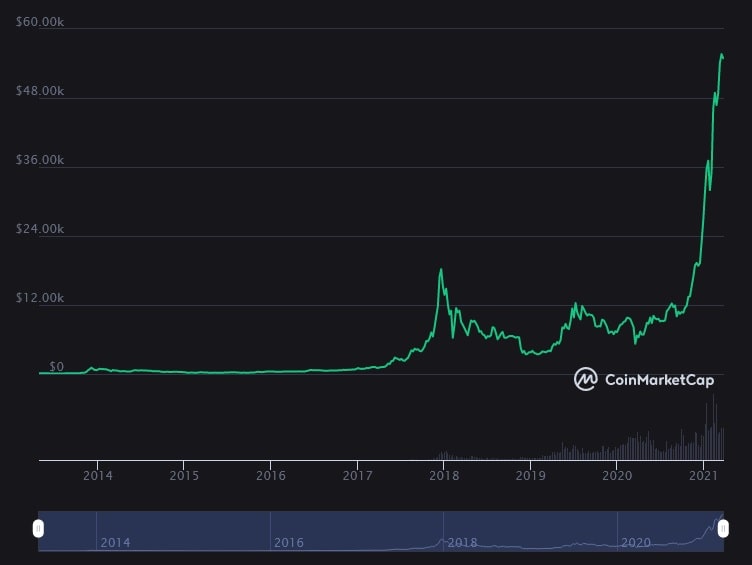
Ethereum
Let's move to another inevitable player in the history of blockchain timeline. Ethereum was created by a development team led by Canadian programmer Vitalik Buterin, who originally described Ethereum in a publication at the end of 2013. In early 2014, the developers founded Ethereum Switzerland GmbH in Switzerland.
In the second half of 2014, an ICO was announced as a crowdfunding development fundraiser. It raised 31,591 Bitcoins, the equivalent of $18,439,086 at that time. The first Ethereum block was mined on 20 July 2015, and the blockchain platform itself was launched on 30 July 2015.
In May 2016, hackers exploited a vulnerability in the Ethereum network, stealing about $50 million. This led to a split in the community of network participants and an Ethereum hard fork.
On 28 February 2019, the second part of the Metropolis update, Constantinople, was launched. It prepared the network to transition to the Casper PoS protocol and abolish the previous mining model.
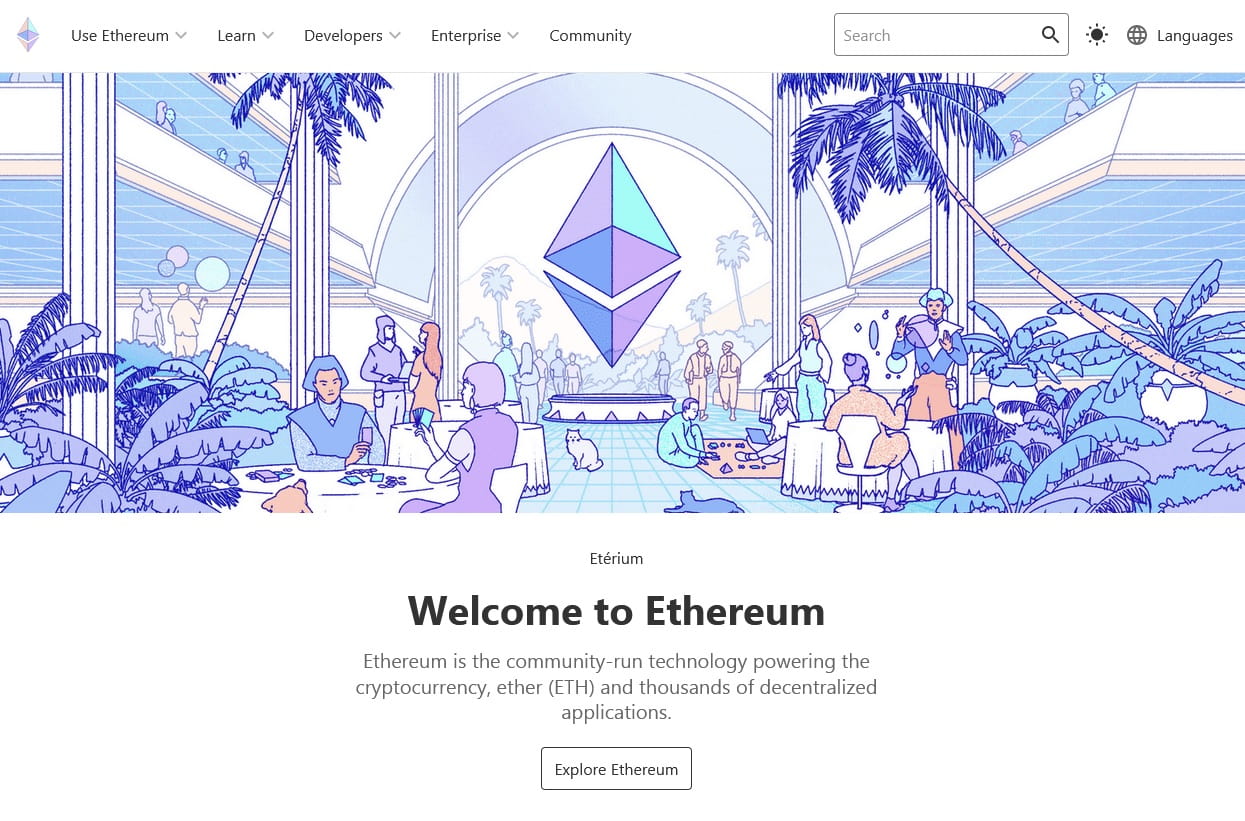
Ripple
The origins of the Ripple cryptocurrency date back to 2004, when a Canadian programmer named Ryan Fugger was developing a new payment system that could provide users with easier, more secure financial transactions. However, he didn't manage to achieve any noticeable success at the time.
The Ripple cryptocurrency was created in 2011 by Opencoin, a corporation directed by Fugger. Ripple was positioned as a newer, faster alternative to Bitcoin that would be available to individuals and legal entities.
In 2013, the old development team decided to leave Opencoin. Chris Larsen joined the company, recruiting a new team in the process. Immediately after that, the decision was taken to rename Opencoin Ripple Labs and change the company's main direction to focus on working with the banking sector.
The first institution to partner with Ripple Labs was a German bank called Fidor. After that, the company's popularity began to skyrocket. The products attracted more prominent players, such as Western Union and the Commonwealth Bank of Australia.
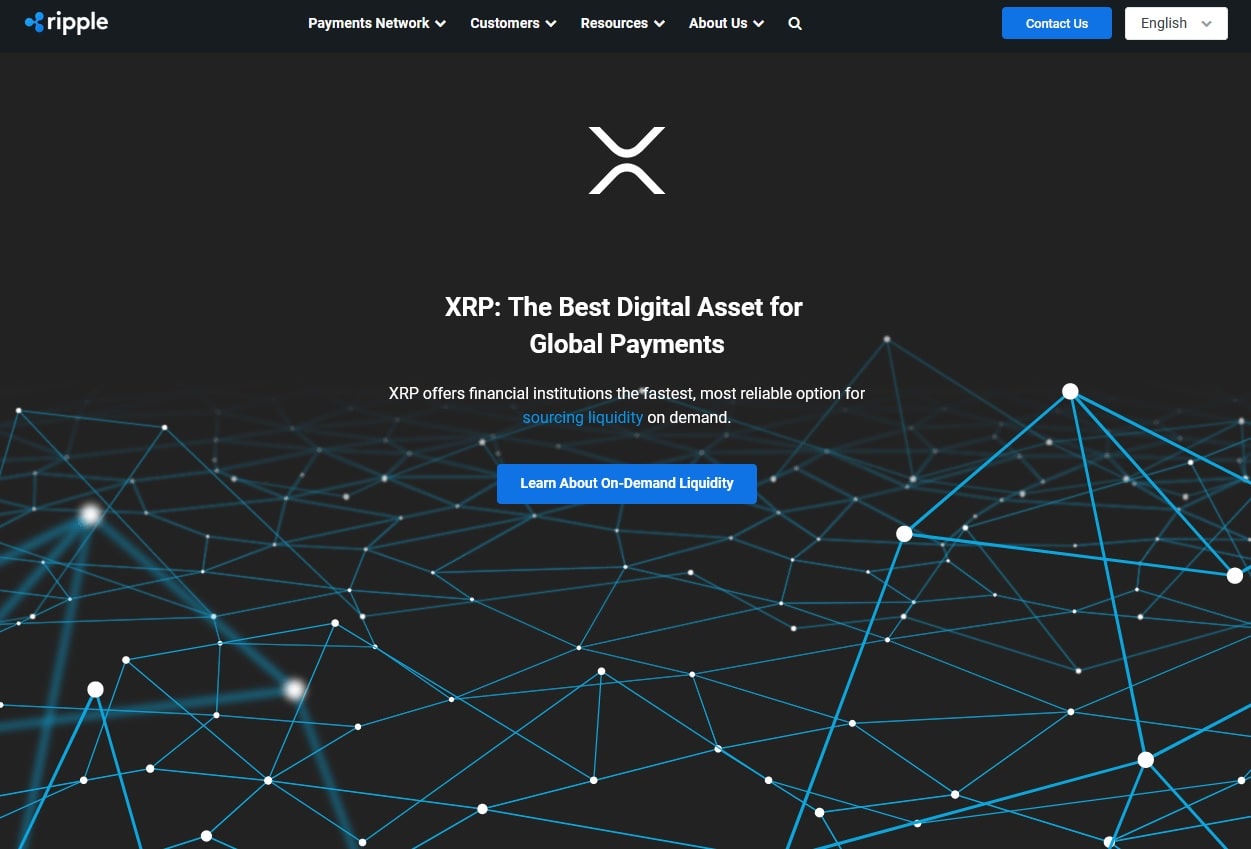
Tags
Try our Bitcoin Cloud Miner and get additional crypto rewards based on your trading volume. It's immediately available upon registration.
Try our Bitcoin Cloud Miner and get additional crypto rewards based on your trading volume. It's immediately available upon registration.
FAQ
How long has blockchain been around?
Blockchain has been around since the introduction of Bitcoin in 2009, making it over a decade old as of 2024.
How was blockchain created?
The history of blockchain started when the concept was introduced by an individual or a group using Satoshi Nakamoto in 2008. The main purpose was to establish a public distributed ledger for Bitcoin cryptocurrency transactions. By incorporating blockchain into Bitcoin, it became the first digital currency to solve the issue of double-spending without relying on a trusted authority or central server.
The origins of blockchain technology can be linked to the cryptographic research carried out by two scientists, W. Scott Stornetta and Stuart Haber. They aimed to create a system where document timestamps would remain immune to tampering or alterations. In 1992, Haber, Stornetta, and Dave Bayer integrated Merkle trees into the design, enhancing its efficiency by enabling multiple document certificates to be grouped into a single block.
When was blockchain developed?
Blockchain history started with the concept of a blockchain-like protocol, which was first proposed by cryptographer David Chaum in 1982. However, the actual implementation of a cryptographically secured chain of blocks was described in 1991 by Stuart Haber and W. Scott Stornetta. They aimed to create a system where document timestamps could not be tampered with. In 1992, Haber, Stornetta, and Dave Bayer enhanced its efficiency by allowing several document certificates to be collected into one block.
The term "blockchain", as we know it today, was coined by Satoshi Nakamoto in 2008. It was developed as the public distributed ledger for Bitcoin cryptocurrency transactions, making Bitcoin the first digital currency to solve the double-spending problem without the need for a trusted authority or central server.
Who invented the concept of blockchain?
The concept of blockchain was initially proposed by David Chaum in 1982. However, the implementation of a cryptographically secured chain of blocks was detailed by Stuart Haber and W. Scott Stornetta in 1991.



